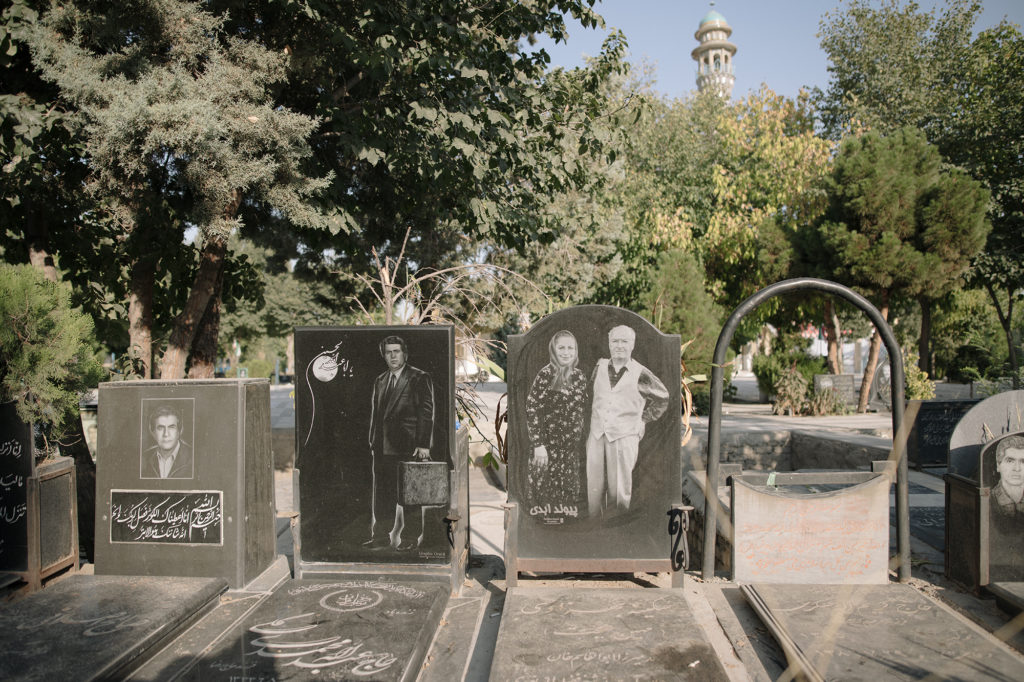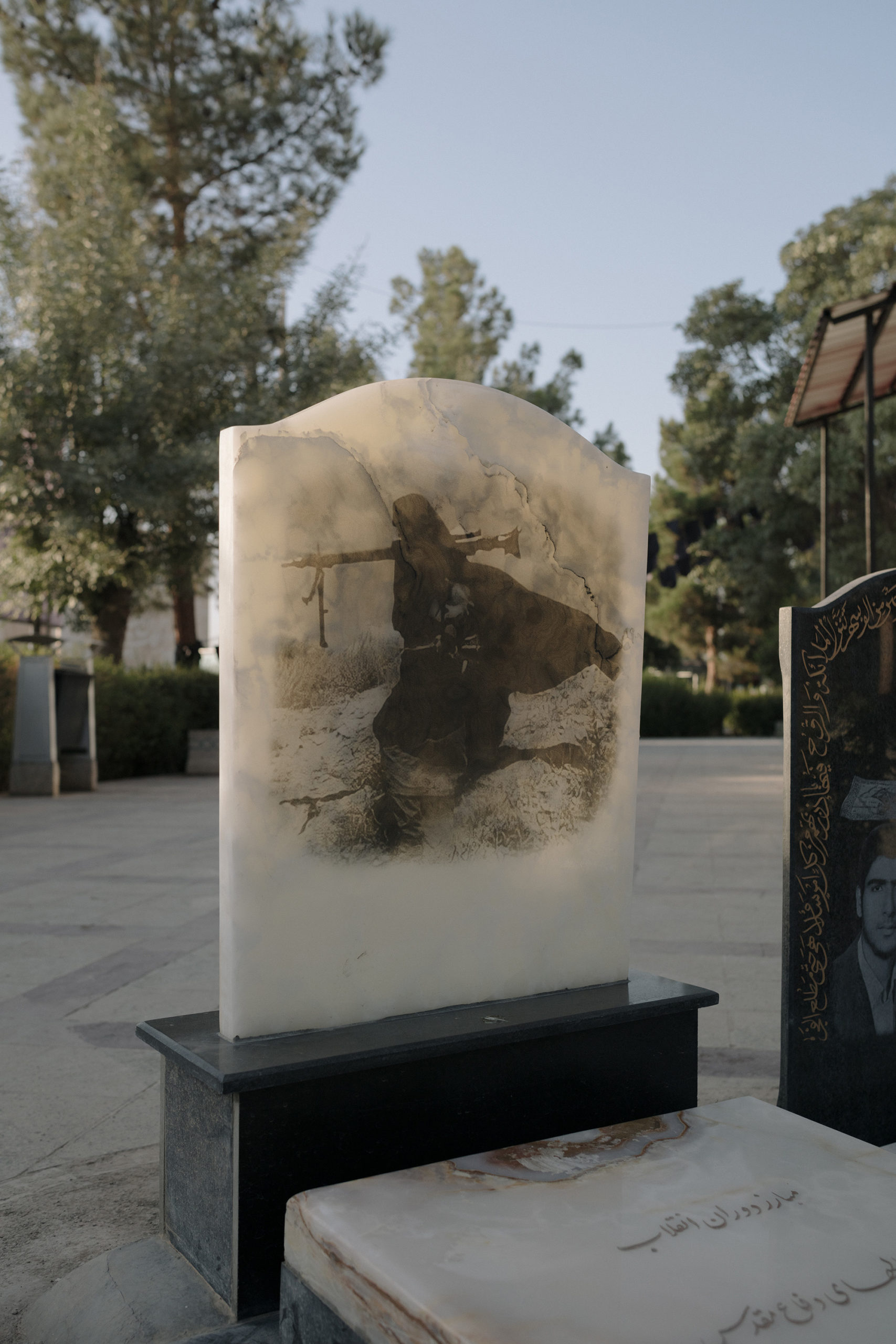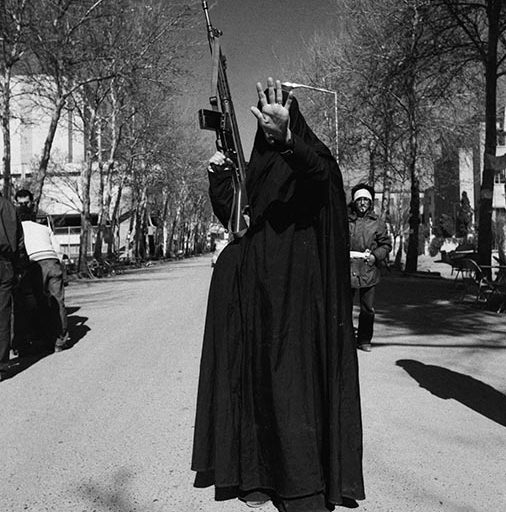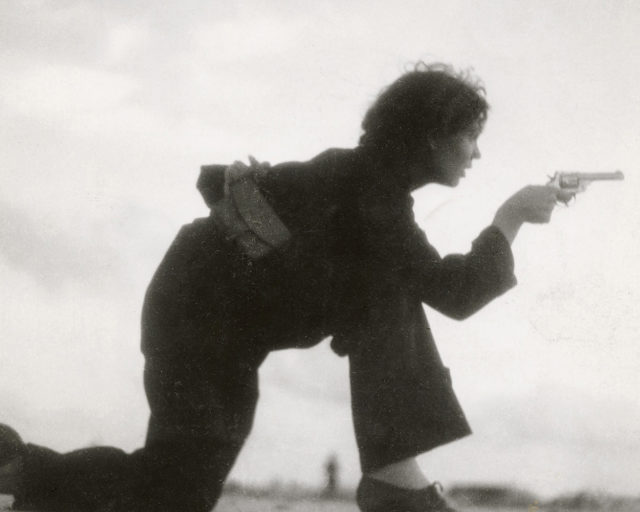In Iran, Death Has a Face
Photography is essential to Iranian mourning rituals, as pictures of the dead appear on street notices, tombstones, and memorials.
Amin Yousefi, Martyrs' Cemetery, Behesht-e Zahra Cemetery, Tehran, 2021
During the heady days of the Arab Spring in early 2011, we were celebrating a low-key Persian New Year in Tehran, transfixed by scenes on television of the protests across Muslim countries. A year earlier, out of fear of violence, we had abandoned our own protests in Iran, which were triggered by the disputed presidential elections that brought Mahmoud Ahmadinejad to his second term in 2009. So we watched in wonder as people in Arab-speaking nations, from Tunisia to Syria, took to the streets, and when they seemed so close to their goal of achieving democracy—which we have been regularly trying for in the past hundred years—a sense of jealousy set in. Yet, all the time, the number of dead increased in Egypt, and especially in Syria, where the uprising would soon be followed by outright war.
I asked a Colombian friend and journalist who has covered Iraq and Syria why we Iranians retreated after some two hundred people died in our protests, but Syrians would still go out despite reports of thousands of deaths. What makes them go on? She had an interesting take: “Every time a protester is killed, Iranians immediately circulate their photograph. They very quickly turn a number into a face, a person.”

In Iran, death has a face. Our mourning rituals are now influenced by photography and the digital technology that can transmit images in all sorts of media, including setting the dead person’s photo in stone. When you step outside in Iran, you literally walk on the memory of the dead: almost every street and highway is named after martyrs of the Iran-Iraq War or the lost heroes of the Islamic Republic, an ideological system that thrives on memorialization of martyrdom through huge murals, posters, billboards, stamps. Any flat surface that can be seen.
Death is a big event for Iranians, marked with obligatory rituals that last for an intense seven days, peaking on the third, and later repeating at day forty and the one-year anniversary. The rituals are accompanied by printed notices that are posted around the deceased’s neighborhood and placed in the rear windscreen of relatives’ cars. A picture of the deceased is set in the center of the notice amid decorative margins, with a brief eulogizing text and details about the time and place of mourning.

The rules of modesty imposed in Islam are upheld beyond this earthly life, so no photographs of dead women can be displayed on their death notices. Instead, they are generically represented by a block print–style representation of a flower in black or recently with a color photograph of an actual flower. Once traveling through Qom, a desert city of seminaries where the guardians of faith and fortune in the country congregate, I saw a death notice for a woman that was adorned rather eerily with the shape of a magna’e, the wimple-style hijab women are required to wear to access universities and government offices. The flat, white void in the middle of a rigid, black bell shape was a genius of contradiction, effacement rendered in eye-catching graphics. Sometimes the families of a departed woman don’t bother with the visual metaphors that are meant to soften this last blow of censorship and instead dive straight into the text. While the portraits of men gazing at the living—fixed, suspended in a different time, visually present for the duration of the funeral—help remind mourners of what they looked like when they lived, the women disappear as soon as they die.


Until a few years ago, headstones were embellished with poetry in fine calligraphy. These days, walk into any cemetery in Iran and you are likely to stand among rows and rows of faces, etched in white onto black marble, creating a collage like a giant monochrome yearbook. Many of these images are of women, some lifted from photographs of them in private moments when they were not observing the enforced rules of hijab. This new fashion in memorializing the dead so violently contradicts the decree on the representation of women that some local authorities are covering the images with white paint or trying to ban the practice altogether. But on the dusty road outside Tehran’s main cemetery, rows of stone masons’ shops display these eye-catching new forms of art to draw new customers in. How did this trend take hold in a country that likes to hide its women from view?


The answer may lie in the cemetery itself. A large section of Behesht-e Zahra, or Zahra’s Paradise, the sprawling cemetery south of Tehran and the country’s largest, is dedicated to the dead of the Iran-Iraq War, the eight-year conflict that began in 1980 soon after Iran convulsed into a revolution that put an end to secular rule. The official count of the dead varies from hundreds of thousands to a million. This section of the cemetery is packed with graves. Almost all are decorated with some kind of photograph. Some have a glass box that contains personal and military paraphernalia and resemble small shrines; some of their photographs show the soldier dead. In keeping with the main cemetery in the capital, every small cemetery across Iran has a martyrs’ plot, where regimented rows of graves feature enlarged headshots set in metal vitrines. These figures all have that vacant look common to passport photography.
Visuals of death became a staple of life in Iran. People became used to seeing banners and posters of those who died in the war.
Iranian news photography was invigorated by the revolution, but it was the war with Iraq that birthed the genre of war photography in the country. The Islamic Republic has never shied from depicting death in its full gory detail. Unlike the depiction in the West of soldiers as untiring warriors, Iran’s memorialization of the war relied heavily on the demise of the soldiers. Their martyrdom, echoing the martyrdom of Imam Hossein who is beloved by Shia Muslims, is a badge of honor that secures entry to heaven. Such idolatry of death brought the Iranian public face to face with disturbing and graphic scenes that would be censored in other cultures. Visuals of death became a staple of life in Iran. People became used to seeing banners and posters of those who died in the war. State television produced documentaries of the front, beaming images of the war into Iranian homes at peak hours. Ayatollah Ruhollah Khomeini’s burial was a widely televised affair, as one would expect, but his death, on his hospital bed, complete with a ticking clock and the flatline on the cardiogram, was also recorded for posterity.


The printing press brought us paper death notices. The new technology of laser-engraving digital images onto stone would seem a natural evolution and may be the reason for this new enthusiasm for picturing the dead on headstones. The practice exists in Russia, as seen in the works of Denis Tarasov, who has collected a series of similar engravings. Marina Abramović’s Seven Deaths (2021) also uses the same technique to transfer imaginary death portraits of herself onto alabaster, referencing this headstone art. Depicting dead people, of course, is not a new phenomenon. As Egypt’s mummy portraits, the full-scale statues that wealthy medieval Europeans commissioned to rest on top of their tombs, and Victorian-era postmortem photography demonstrate, the impulse to preserve an image of the dead is an enduring one. There is a difference, however, in this new Iranian trend. The photos engraved on these headstones capture a moment of life and set them literally in stone: a young man is shown with his boxing gloves, a business man with his briefcase, an elderly couple stands close to each other. We endlessly record every moment of our living lives on our phones, so this last grand photographic gesture for our dead seems like a fitting substitute for the complex and costly mourning rituals that had to be cancelled as COVID-19 swept mercilessly across Iran.

All photographs for Aperture. Courtesy the artist
Beyond the cemetery, new death rituals are emerging with the help of photography. Iranians have an established tradition to publicly express their condolences by hanging cloth banners, with messages of respect made by professional calligraphers, on the walls of a house, alerting the neighborhood that the household was in mourning. The minimal handwritten banners have now transformed into digital banners with extra color and decorations. But we have gone one step further. Nowadays mourning families order advertising banners, with an enlarged photograph of their dead relative, which they affix to lampposts on the main street, replicating the posters and banners with images of the war dead that proliferate the country’s public spaces. Instead of the lofty poetry of the gravestones, or the propaganda of the war, these banners have short everyday messages for passersby, like one I recently saw of a young man who had turned to wave back at the camera as he was walking away. The banner read, “Goodbye friends, bless my soul.”


























